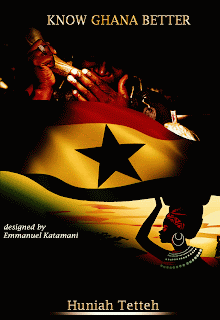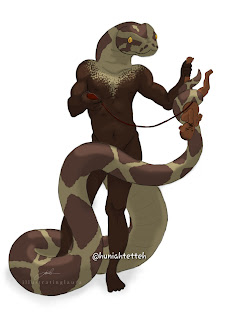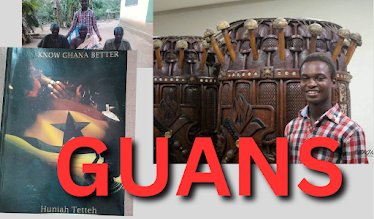THE SISSAALA GROUP OF LANGUAGES (GURMA)
GURMA LANGUAGES
The people of Sissaala are located in the Upper West Region of Ghana. It
is a very distinct language that has linguistic affinities with just its sister
languages. Sissaala and its sister languages belong to the Gurma language group
and they are Sissaala, Templima, Vagla, Mo, Chala and Ntrubo. Kasem is a
language isolate but then, it has Sissaala borrowings which “may” call for
Kasem being part of this family although Kasem is part of the Gurunsi ethnic
group. The name Sissaala is a corruption of Nseba meaning “I said” in Sissaala.
So from Nseba it gradually corrupted to Isela then Isala and gradually to its
modern name Sissaala.
There is no certainty as to where they had migrated from because oral
history continues that they migrated from several areas to form clans. And the
several clans came together to form a wider Sissaala community. Furthermore,
the once unified Sissaala community separated over an issue or quarrel that
came up due to the sharing of a head of a dog. The separation led to the birth
of the Templima, Vagla, Mo, Chala and Ntrubo tribes. Sissaala spoken in the
Upper West Region of Ghana has two main dialects, the Gibalga dialect and
Paasaal dialect. The Sissaala are located in the Upper West Region typically
the Sissaala West and Sissaala East districts. Sissaala has borrowings from
Kasem, Buli and Kantonsi linking it to the Gurunsi languages.
Now we had earlier learnt about the Mo. The Sissaala are not only those
we know to be in the Upper West region but then the Templima (Daboya District),
Mo (Wenchi-Kintampo), Vagla (Bole-Bamboi) and
Chala (Oti Region) are all part of the Sissaala family who had perhaps
migrated from their original homeland to make settlements at their present
locations.
Sissaala and the other languages earlier mentioned share an amazing
chunk of mutual intelligibility that learning the language of the other would
not be much of a problem to a speaker of let us say Templima. We would study
briefly on all those languages to have fair idea on them.
Templima is spoken in and around Daboya and its communities. Those who
speak Templima are called Tampolensi. The Templima live with the Gonjas so one
would naturally expect them to be natively bilingual in Templima and in Gonja.
Of course, they have borrowings from Gonja into their language. As well, they
have borrowings from the neighbouring Dagaare language which is a Mole-Dagbon
language hence, Templima is also like the Mole-Dagbon languages and quite
divergent from its family of languages. Aside Daboya and its environs, the
Templima are also highly concentrated in Tamale and in the East-Mamprusi
district of the North-East Region.
The Tampolensi are believed to have assisted the Mamprusi in the 17th
Century when the Mamprusi were in war against their neighbours and the
Tampolensi came in to assist them. Thus, after the war, they were settled in
target areas around East-Mamprusi leading to the present Templima settlement in
the North-East Region. It is continued that the name “Templima” is of Mampruli
origin. “Tobu” in Mampruli means “war” and “piin” means “to cut off/severe”
hence “Tob’ piin” meaning “those who cut off head during war.” Tobpiin is what
has gradually evolved into what we call Templima till date.
Back to Tamale, the Templima are multilingual in Dagbanli, Gonja (Ngbanye)
and in Templima itself whereas those in the North-East Region are biilingual in
Mampruli and in Templima. The Templima are located at Asalikoowu around Wa; and
in the Northern Region they could be found at Daboya, Langbinsi, Taari,
Mankarigu and Diisa. A dialect of Templima called Chakali is spoken in the
Upper West region. Chakali has assimilated lot of Dagaare/Wali words including
Sissaala proper.
Safalba and Vagla are sister languages spoken side by side in the West
Gonja district. Safalba is a Mole-Dagbon language just like Hanga but then, due
to Safalba closeness to Vagla, they have assimilated much of Guan culture and
Sissaala culture as well. Vagla varies considerably from Templima and from
Sissaala as well although Templima speakers have less trouble understanding it
as compared to Sissaala speakers trying to understand Vagla. They mostly view
themselves as Guans and as such they are good speakers of Guan. Safalba, Vagla
and Hanga are spoken within the Bamboi areas. The Vagla are said to have
separated from the Sissaala due to a quarrel that occurred at modern Sissaala
land during a fetish ceremony. The Vagla have Tuna as their chief community and
paramouncy.
We had earlier learnt about Mo from the story of Kintampo. The Mo people also known as Dega are found in
the Bono-East region, Kintampo and surrounding communities. They are the most
unique of the Sissaala speakers as they have been greatly influenced by
southern Gonja and the Bono language. They speak with the Akan accent so at
fist audit, one may perceive their language as an Akan or Guan language unless
one listens carefully. They also have extensive Guan and Akan borrowings which
makes the Mo language very unique among its relatives. Mo speakers also speak
the Bono-Twi and at times Asante Twi.
Ntrubo and Chala are closely related languages spoken in the Oti Region
which are also of Sissaala origin. Some Ntrubo identify themselves as Guan
perhaps due to the fact that they have lived with the Guans and Akans for
centuries in the Oti Region. Ntrubo has lots of Akan, Guan and Gidere
borrowings making their language very unique as well. The number ten (10) in
Ntrubo which should be originally “Fi” has been modified to look like the Guan
Kudu; hence the Ntrubo says it as Kufu.
We would at this in juncture consider the numerical systems of the
Sissaala languages in comparison to Hanga and Safalba to establish the facts. Then
we shall proceed to their common courtesies. Bear in mind that Hanga and
Safalba are Mole-Dagbon whereas the rest are under Gurma (Sissaala languages).
|
SISSAALA GROUP OF
LANGUAGES |
MOLE-DAGBON |
||||||
|
No. |
Sissaala |
Mo (Deg) |
Vagla |
Templima |
Ntrubo |
Safalba |
Hanga |
|
1 |
Modoŋ |
Kpee |
Kpee |
Adiika |
Dɔkɔrɔ/Dale |
Kpanleri |
Yinni |
|
2 |
Bɛlɛ |
Nɛɛ |
Nɛɛ |
Alewa |
Ala |
Ayi |
Ayi |
|
3 |
Botro |
Toro |
Horo |
Atora |
Atoro |
Ata |
Ata |
|
4 |
Bana |
Naarɛ |
Naazu |
Anaasi |
Anaara |
Anaasi |
Anaasi |
|
5 |
Bamu |
Ami |
Nue |
Inyuu |
Anu |
Anuu |
Anuu |
|
6 |
Bagbu |
Numɛɛl |
Numbɛl |
Anora |
Iloro |
Ayɔbe |
Ayoobu |
|
7 |
Bapɛ |
Nuanɛ |
Nidaanɛ |
Anopei |
Nyɛtoro |
Ayopoi |
Ayopoɛ |
|
8 |
Tsoli |
Nuatoro |
Ŋmantanazi |
Gmenasa |
Janara |
Anii |
Anii |
|
9 |
Nɛmɛ |
Nuanarɛ |
Kabɛl |
Dikito |
Kadale |
Awãi |
Awãi |
|
10 |
Fi |
Fi |
Fi |
Fii |
Kufu |
Pie |
Piiya |
In terms of the variations we are trying to establish, indeed these
languages are Gurma languages together with Bimoba, Basari, Kokomba, Kotokoli
and few other languages spoken in Togo like Lukpa, Kabre, Loso etc. But then if
we should limit our scope to Ghana we can then conclude that Gurma languages
have Northern, Western, Southern and Eastern divisions.
Northern Gurma would be Sissaala (Paasaal and other dialects) and
Templima. Southern Gurma would be Ntrubo, Chala, Kotokoli and other languages
within the area. Eastern Gurma would then include Bimoba, Kokomba, and Basari
etc. Western Gurma would be the languages of Mo, Vagla and other dialects
within.
Bimoba although Gurma has
lots of Mole-Dagbon borrowings most especially from Mampruli making it easier
for Bimoba speakers to understand Mampruli but the otherwise for Mampruli
speakers trying to understand Bimoba in its spoken form.
COMMON COURTESY IN SISSAALA
|
WOBULꜪꜪ |
BULꜪ |
WORD |
RESPONSE |
|
Idu oo! |
Oo! |
How are you? |
I am fine! |
|
Idie pinɔɔ! |
Oo! |
Good morning! |
Good morning! |
|
Wise pee! |
Oo! |
Good afternoon! |
Good afternoon! |
|
Ngbaŋ na! |
Gbana pe! |
Good evening! |
Good evening! |
|
Etuɔ laŋa! |
Ami! |
Thank you! |
Do not mention |
|
Nsu miŋ! |
|
I beg you! |
|
|
Asalamu walekum! |
Waleku salam! |
Welcome! Or Peace |
|
(Credit: Amidu
Ibrahim, Nungua)
COMMON COURTESY IN TEMPLIMA
|
SHANSHAMA |
SHEHIN |
WORD |
RESPONSE |
|
Eduyere? |
Mkpagu alanfiau! |
How are you? |
I am fine! |
|
Ma anshumaa! |
Awoo! |
Good morning! |
Good morning! |
|
Ma anteree! |
Awoo! |
Good afternoon! |
Good afternoon! |
|
Ma anunwula! |
Awoo! |
Good evening! |
Good evening! |
|
Nzaamuu! |
|
Thank you! |
|
|
Nsum hinu! |
|
I beg you! |
|
|
Ma jaari! |
Awoo! |
Welcome! |
|
(Credit: Idrisu
Zeinab, Tamale)
COMMON COURTESY IN SAFALBA
|
BULU |
TƆGUMA |
WORD |
RESPONSE |
|
Iŋa be wuna? |
Alanfia be bee! |
How are you? |
I am fine! |
|
Yega be wuna? |
Alanfia be bee! |
How was the sleep! |
Very well! |
|
Tsɔsɔɔ! |
Awoo! Or Ejenyia! |
Good morning! |
Good morning! |
|
Ani ŋminiŋa! |
Awoo! Or Ŋmina tɛɛ! |
Good afternoon! |
Good afternoon! |
|
Ani zaanɔre! |
Awoo! |
Good evening! |
Good evening! |
|
Ani tuuma! |
Awoo! |
Thank you! |
Do not mention |
|
Nsɔtrɛnaa! |
|
I beg you! |
|
|
Janjawɔ! |
Awoo! |
Welcome! Or Peace |
|
(Credit: Hajia
Abrewa, Bole)







Comments
Post a Comment
Thank you! Gladly appreciate your feedback. You can also reach out personally via whatsapp or follow me on youtube/facebook Huniah Tetteh.